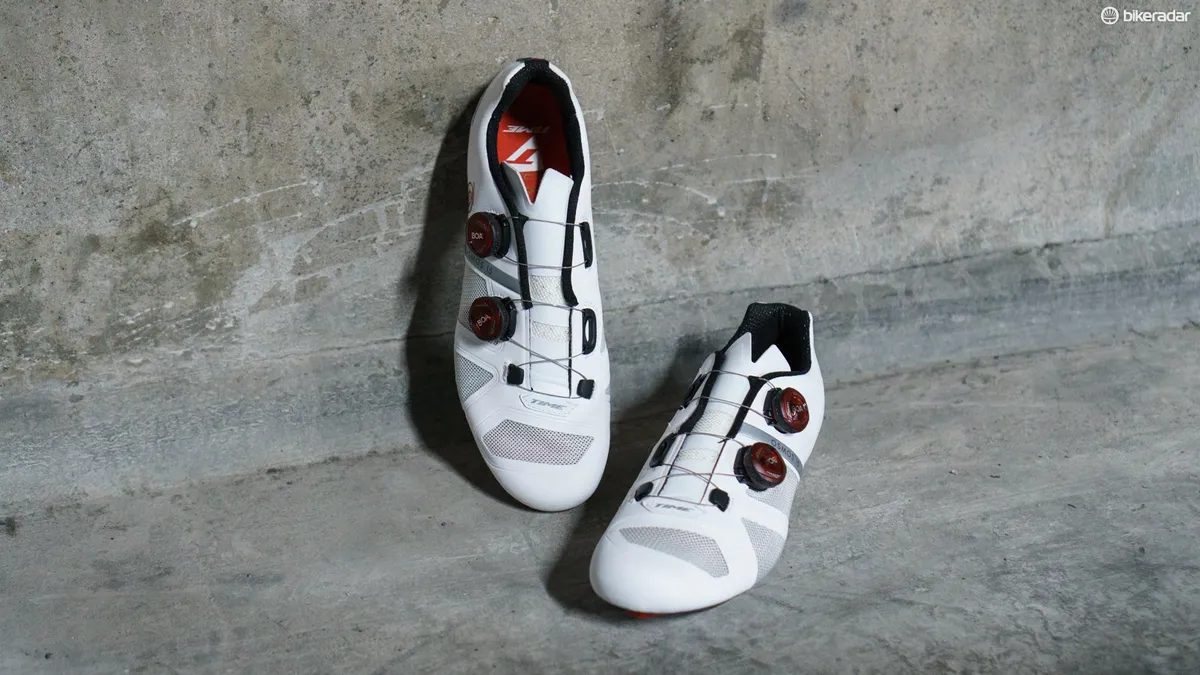Time has re-entered the shoe market with OSMOS, a range of premium road shoes priced from €250 to a heady €350 for the top-end model.
This is the first shoe the brand has released since 2013’s version of the Ulteam RS. Since then, the company has been bought by the Rossignol group, which is best known for its snowsports footwear brands, including Lange and Dynastar — so launching a new range of shoes was a logical step for Time.
An original high-end option
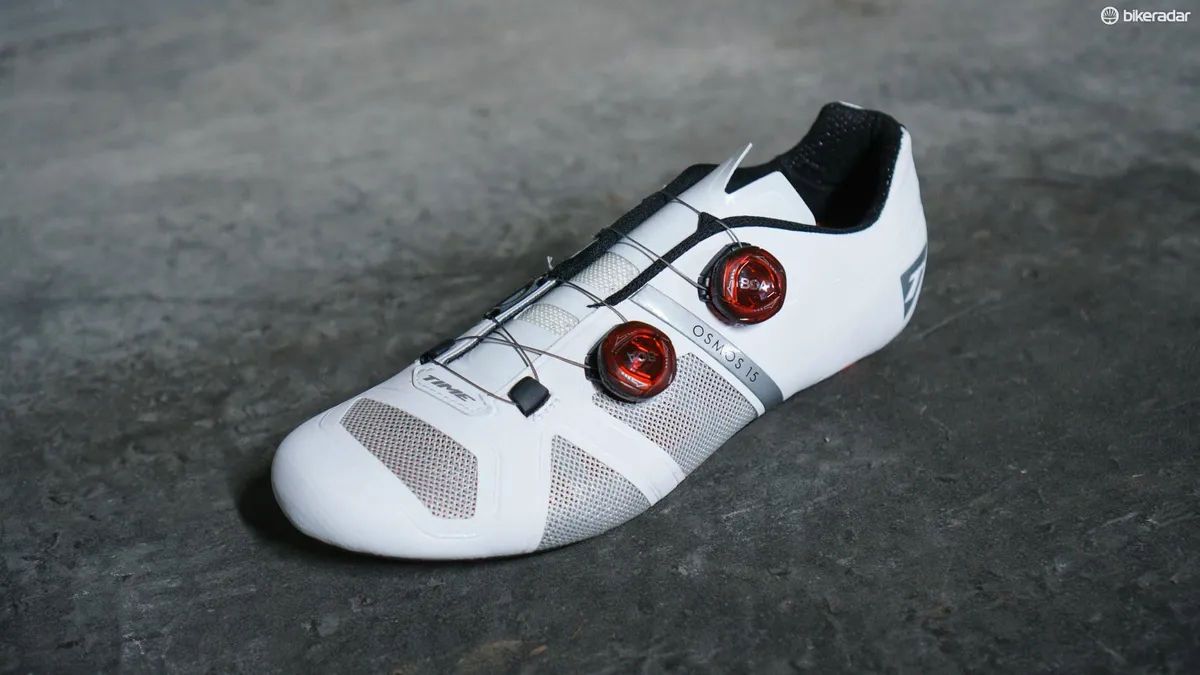
Time released its original clipless pedal system back in 1986, with shoes following shortly after in 1988. MTB pedals and framesets came next in 1992 and 1993 respectively. At its peak, in the year 2000, over 100 starters at the Tour de France were using Time shoes.
Time claims that it began the process of developing its new range of shoes by first analysing the market and competitors’ shoes.
Following this, Time decided that as the entry-level shoe market is so saturated — by its own admission — with excellent options, its energies could be better spent bringing something that it claims to be original to the high-end of the market.
Time OSMOS shoe weights and prices
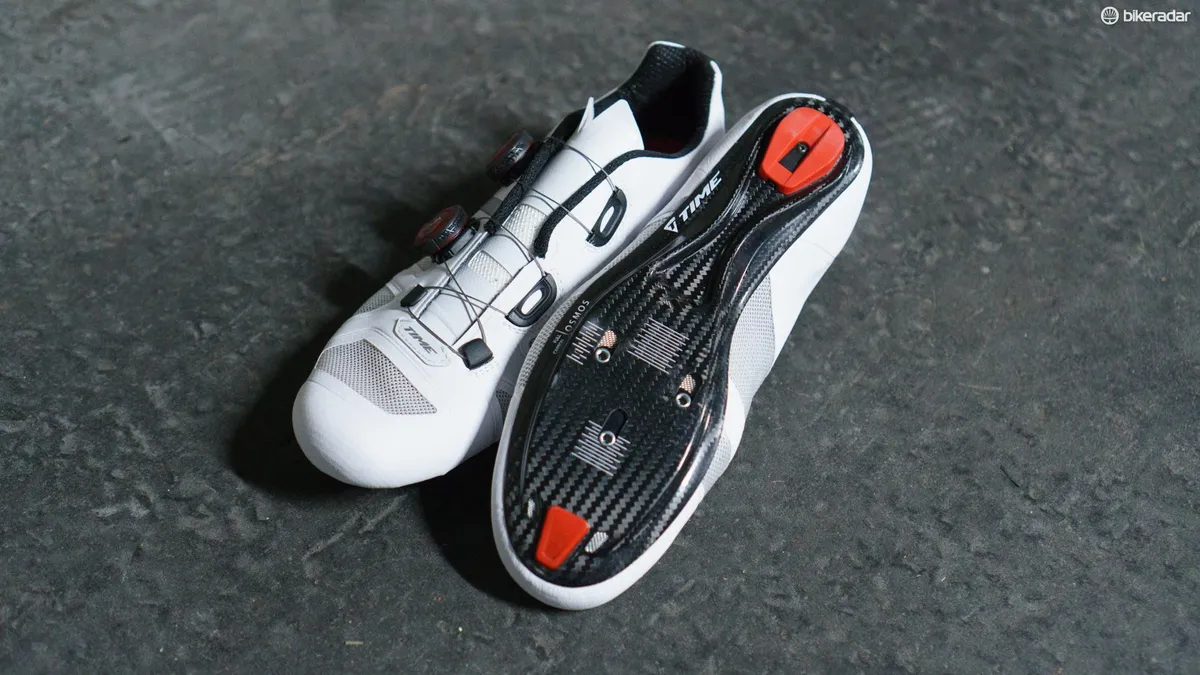
The Time OSMOS range will be available at three different price points:
- Time OSMOS 15, 480g — €350
- Time OSMOS 12, 500g — €300
- Time OSMOS 10, 480g — €250
All weights quoted are claimed weights for a pair of size 42 shoes. My pair of size 42.5 samples weigh in at 490g on the dot.
For what it's worth, I can’t remember the last time I had to size up on a shoe, but I had to jump to a 42.5 over my usual 42 on these particular shoes. Regardless, as always, I would implore you to actually go into a bike shop to try and buy something as fit-dependent as shoes.
The shoes are expected to be in stock with distributors now, so you shouldn’t have too much of a wait if you’re itching to get yourself some flashy new kicks.
Built to last
While you’d certainly hope that a €250+ shoe would last the test of time, Time’s emphasis on quite how much effort it has put into testing the durability of the materials used to construct the shoe is notable.
I had a chance to tour Rossignol’s testing facility — based in Motelbeluna, a major hub of sports shoe manufacturing located to the north-west of Venice — and, while I wasn’t allowed to photograph any of these facilities, I can assure you it’s quite an impressive setup.
I was shown how each material used in the shoe is subjected to a suite of torturous tests to determine, among other things, durability, abrasion resistance, colour-fastness and overall strength.
There was also a large number of shoes from different brands (which, notably, included a number of MTB shoes. Make of that what you will) being subjected to various tests, suggesting Time really has closely examined the whole market.
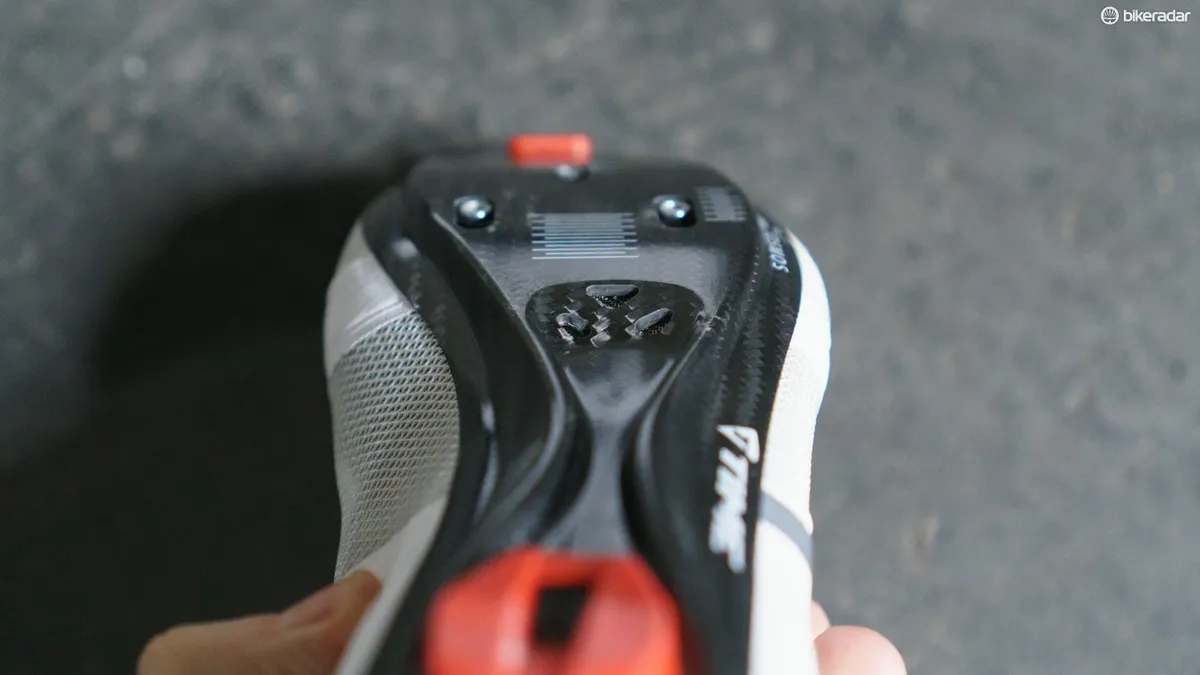
The uppers used in the whole OSMOS range are constructed using a seamless non-stitched heat-moulded construction, which keeps the overall number of individual components used small. This is claimed to keep weight competitively low and improve the feel of the shoe.
The OSMOS 10 upper features fewer cutouts than the high-end models. The OSMOS 12 and 15 also incorporate mesh panels on the toe box and outer edge of the shoe to improve breathability. Like the main panels, these are bonded rather than stitched in place.
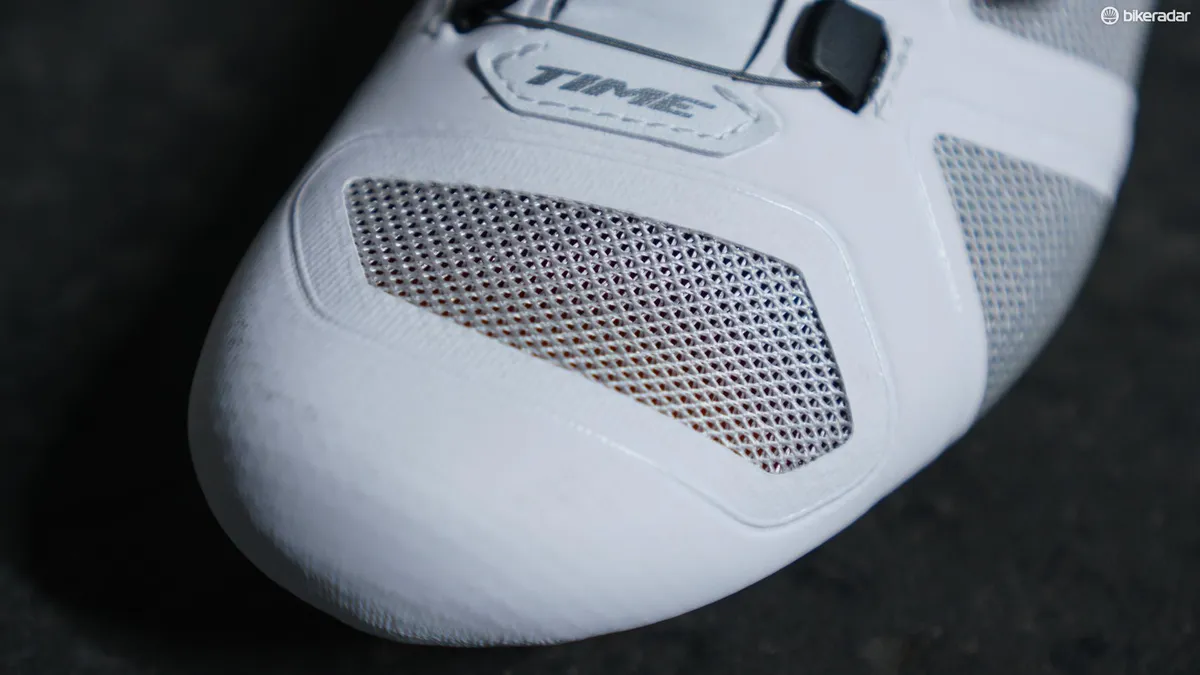
This mesh feels more plastic-like compared to what is typically used in cycling shoes, and the material is claimed to be much more resistant to abrasion as a result.
In a bid to reduce weight, the inner layer of the upper on the OSMOS 15 is cut into a web-like pattern. This is claimed to reduce weight by removing material out of areas that don’t require as much support all while keeping flex to a minimum.
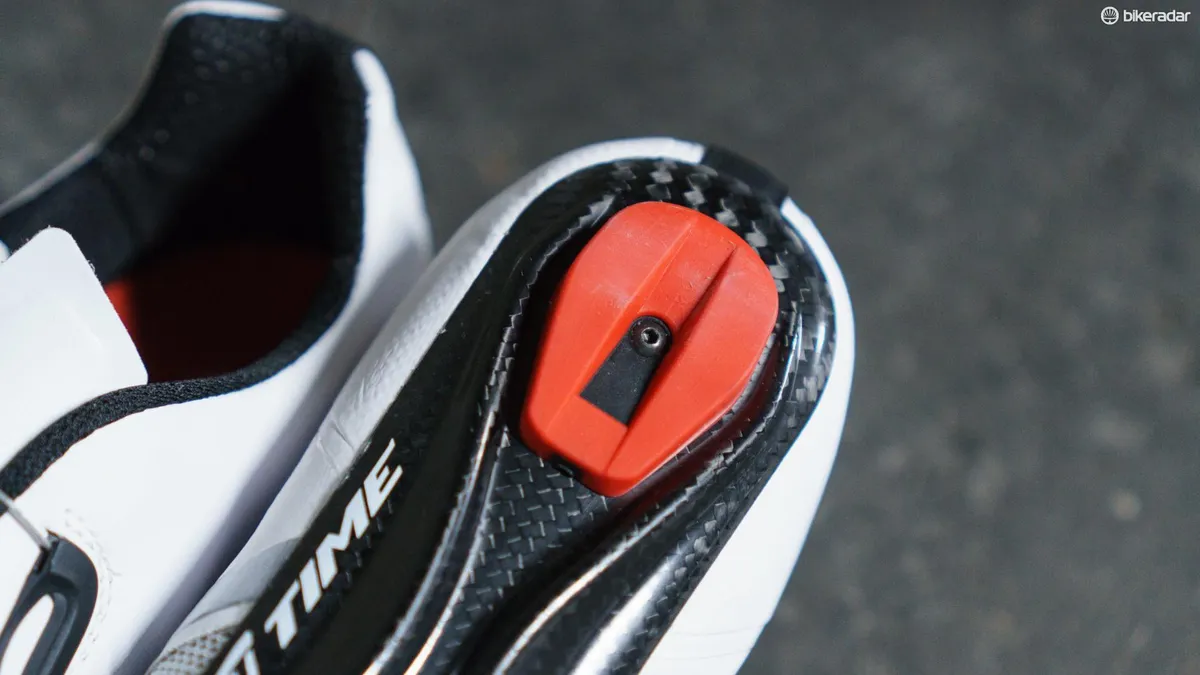
It’s notable — and it’s a real shame this is notable — that the whole OSMOS range features replaceable heel pads. A shamefully high number of top-end shoes feature non-replaceable pads, so I applaud Time for including these.
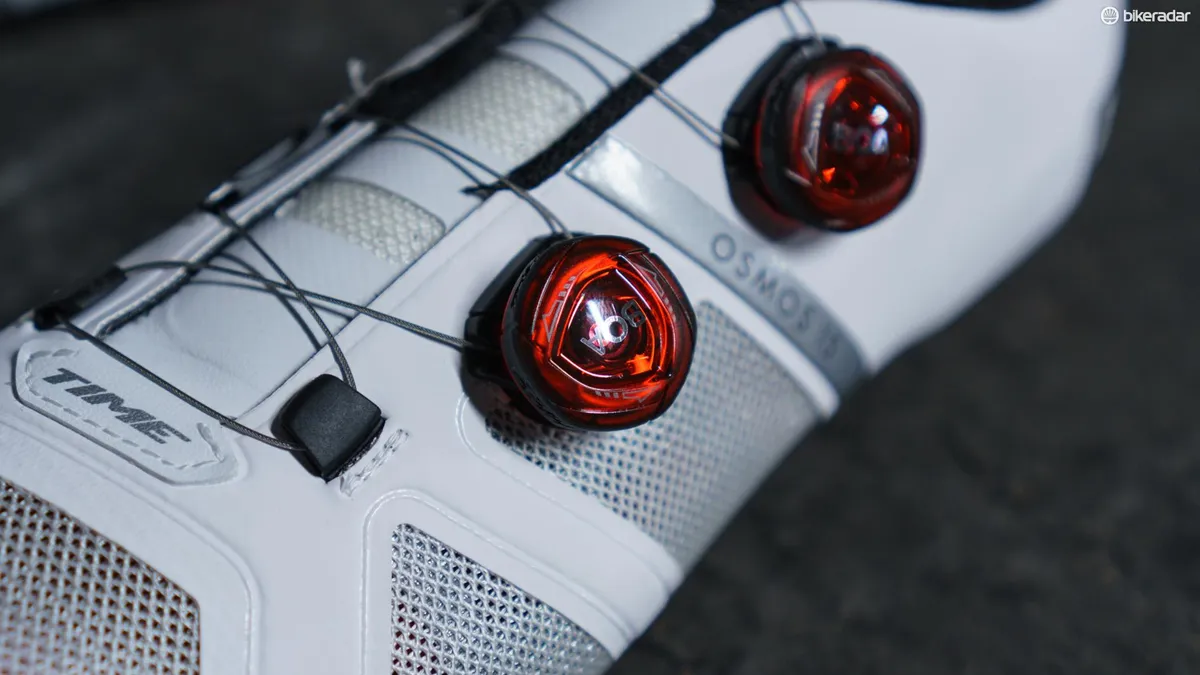
Boa dials are used on all of the shoes, with the OSMOS 15 getting two IP1 dials with the 12 and 10 using a single Boa dial in conjunction with a Velcro strap.

As is commonly seen, each level of the shoe has a different outsole; the OSMOS 15 features a full carbon sole, the OSMOS 12 has a composite/carbon mix that is matched with a 100 percent carbon insert and the OSMOS 10 features a fully composite sole. The top-end shoe is claimed to be 70 percent stiffer than the cheapest.
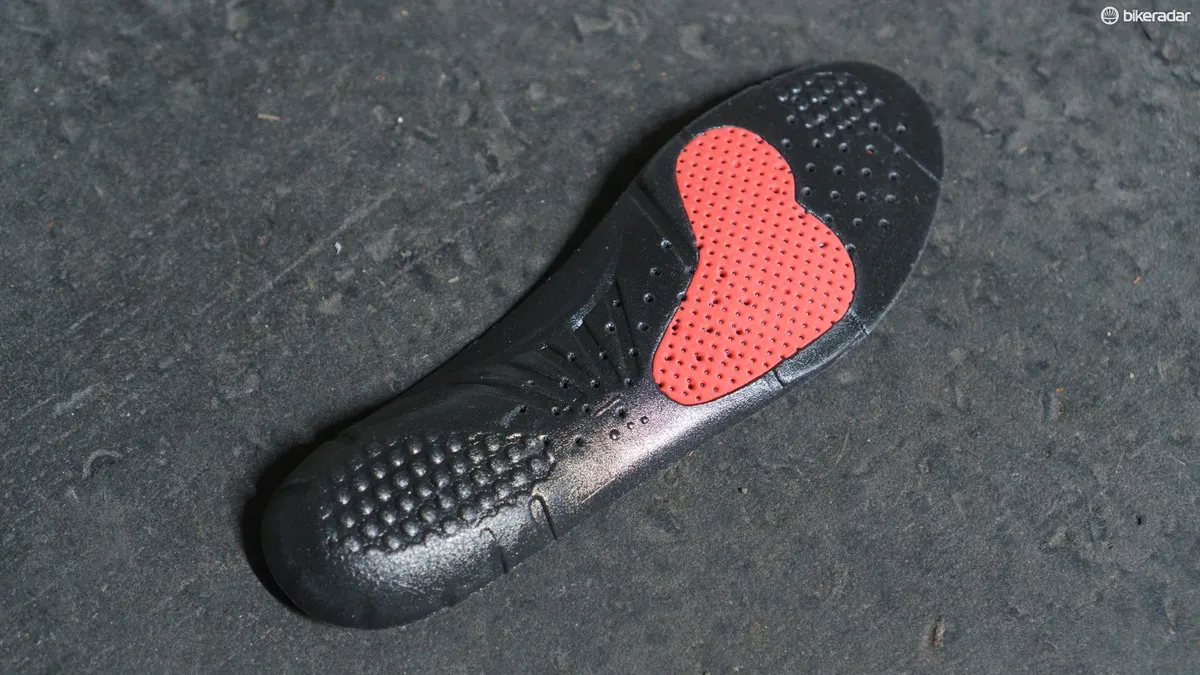
The insole on the top-end shoe is a funky dual-density number. Dubbed Sensor, the technology used here is borrowed from Rossignol’s ski boots and is claimed to reduce vibrations, improve ventilation and enhance comfort.
As you would imagine, Time hopes its customers will use its OSMOS shoes in conjunction with its pedals, with the whole cohesive system designed to marry perfectly. This system as described has a stack height of 22mm.
However, there’s no getting around the fact that Shimano is still the dominant clipless system for the road, and the profile of the outsole has been designed to stiil mate nicely with its cleats.
While the shoes have been developed and tested in Montelbelluna, the final product will be produced in Romania.
Will Time ever make a mountain bike shoe?
Time didn’t rule out the possibility of a producing a MTB shoe in the future when quizzed at the launch.
I also suspect that a MTB shoe is probably already in development, having seen competitors’ shoes being tested at the factory. Watch this space.
